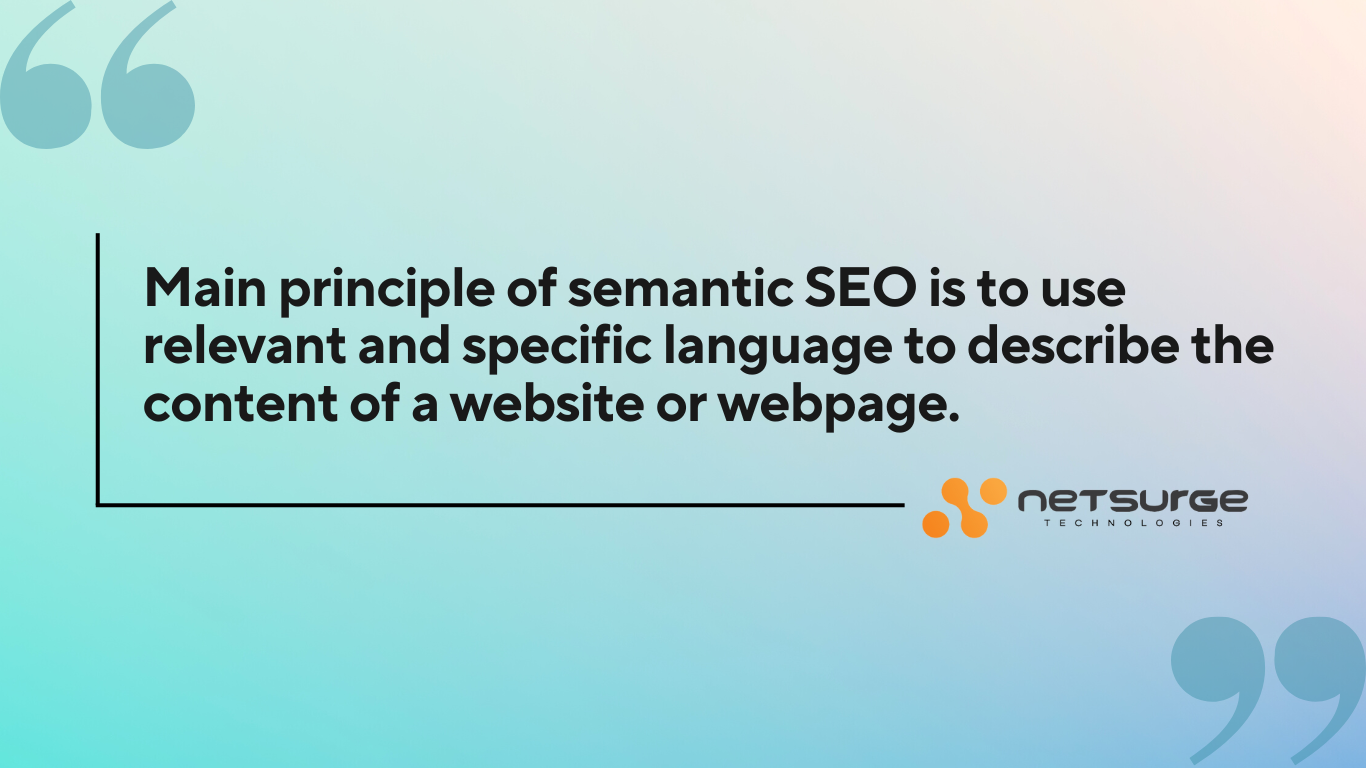Semantic SEO is a technique that involves optimizing a website or webpage for the meaning of its content, rather than just using keywords or phrases in an attempt to rank higher in search engine results. The goal of semantic SEO is to improve the relevance and clarity of a website or webpage, making it easier for search engines to understand the content and more useful for users. This article will explain the principles of semantic SEO and provide best practices for improving the relevance and clarity of a website or webpage. By following these guidelines, you can help improve the semantic SEO of your website or webpage and drive more traffic and engagement.
Principles of Semantic SEO
One of the main principles of semantic SEO is to use relevant and specific language to describe the content of a website or webpage. This means using terms that are related to the topic at hand and avoiding vague or overly broad terms that may not accurately reflect the content.

Another important aspect of semantic SEO is to use structured data, also known as schema markup, to help search engines better understand the content and context of a website or webpage. Schema markup is a standardized way of annotating content with specific tags that provide additional information about the content and its relationships to other content. This can include information about the page’s author, date of publication, and other relevant details. (Have you checked out our Schema Generator Tool?)
One key benefit of semantic SEO is that it can help improve the user experience by making it easier for users to find and understand the content they are looking for. When a website or webpage is properly optimized for semantics, it is more likely to appear as a relevant and useful result for users searching for specific information.
Semantic SEO Best Practices
There are several best practices that can help improve the semantic SEO of a website or webpage. These include:
- Use relevant and specific language to describe the content of the page.
- Use headings, subheadings, and bullet points to break up the content and make it easier to scan.
- Use descriptive and relevant alt text for images to help search engines understand the content of the page.
- Use schema markup to provide additional context and information about the content.
- Use internal linking to help search engines understand the relationships between different pages on a website.
Overall, semantic SEO is an important technique that can help improve the relevance and clarity of a website or webpage, making it more useful and valuable for users and search engines alike. By following best practices and using relevant and specific language, structured data, and internal linking, you can help improve the semantic SEO of your website or webpage and drive more traffic and engagement.
If you want to learn more about semantic SEO and how to optimize your website or webpage for meaning and relevance, please consider signing up for our email list or following us on social media. By staying up to date with the latest SEO techniques and best practices, you can help improve the visibility and success of your website or online business. Check out Netsurge’s semantic SEO services and feel free to reach out to us to get a quote today!



